When we left Pearl Harbor, it was the evening of December 7th, and most of Battle Force was on the bottom of the harbor. But what happened to the ships afterwards? We’ll go through the ships in the order which they returned to service (if they did) and then look more broadly at the use of the survivors during the war.
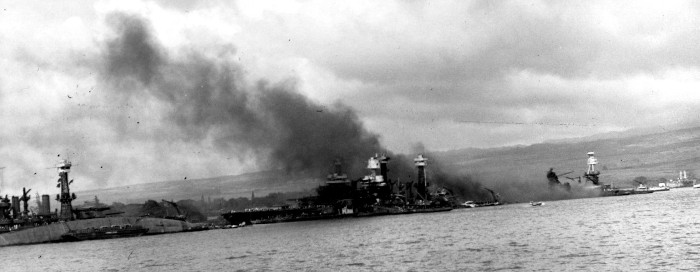
Battleship Row, Dec 8, 1941 (L-R: Maryland, Oklahoma, Tennessee, West Virginia, Arizona)
Maryland was the first ship ready to go to sea again, albeit with some damage. Tennessee was slightly behind her, as she was wedged by the West Virginia. Both ships were sent to Puget Sound at the end of the year, and repairs were completed in February. Pennsylvania was sent to San Francisco at the same time, returning to duty in March. All three ships served as part of TF 1,1 the backup to the carrier fleet until after Midway. Tennessee and Pennsylvania were sent to the states for comprehensive refits, running 8/42-5/43 and 10/42-2/43 respectively. Both received the standard upgrade, a reconstructed superstructure resembling those on the fast battleships (although there was less work done on Pennsylvania than the others), 5”/38 secondary guns in place of the former mixed secondary battery and upgraded fire control. Tennessee was also blistered against torpedoes, restricting her to the Pacific or a long journey around South America. Maryland was never refitted.

Tennessee before and after reconstruction
Nevada was refloated in February of 1942, and provided valuable experience for the salvage of California and West Virginia. One of the most important lessons was the necessity of paying attention to air quality, as two men were killed by hydrogen sulfide produced by the immersion of paper products in water. She was temporarily repaired at Pearl Harbor before being sent to Puget Sound Navy Yard for a full overhaul and modernization, which was completed in October. Her refit was much like Tennessee’s, but without the blisters.
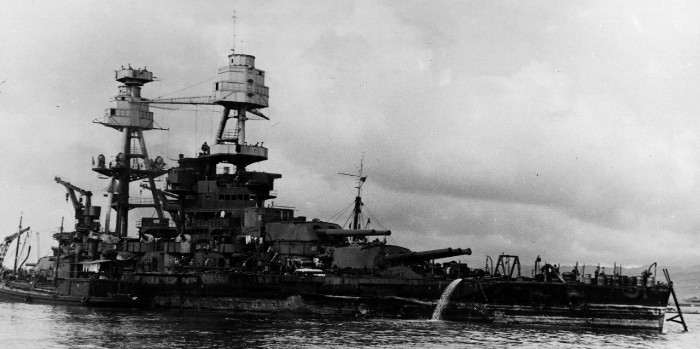
Nevada being prepared for drydocking
California was the next to be salvaged. She was in much worse shape than Nevada, and had to be extensively lightened. All of the guns (except those of Turret 4, which was underwater) and the conning tower and mainmast were removed. A cofferdam was built around the deck edge, essentially giving her extra freeboard, and all possible openings were sealed. Pumping then proceeded, gradually lowering the water level inside the ship, with removal of stores and bodies going on as more of the interior was exposed. Great care was taken to preserve her interior equipment, particularly electrical systems, the responsibility of a Commander Hyman G. Rickover, later to become famous as the man behind the Navy's nuclear reactors. She was refloated in late March and docked in April, undergoing additional repairs to structure and machinery until October, when she sailed for Puget Sound, receiving the same type of refit as Tennessee. She returned to the fleet in January 1944.
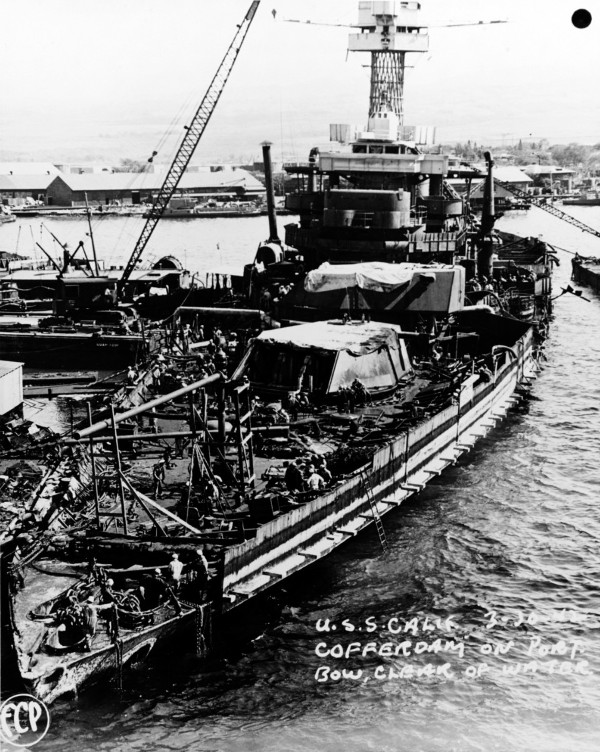
California being refloated (note the cofferdam)
West Virginia was probably the most impressive salvage effort of the attack. She was badly damaged, and not raised until May of 1942, through the use of underwater concrete to seal pre-built patches on the ship. Cleaning out the ship was a very unpleasant job. All heavy weights had to be removed, such as oil, ammunition, and anchors. The worst problem, though, was dealing with the meat lockers, which had obviously gone off. On West Virginia they pumped seawater through for several days to remove the stench. She was reconditioned at Pearl Harbor, and sailed in May 1943 for Puget Sound, where she underwent a refit similar to that of Tennessee and California, emerging in July 1944.
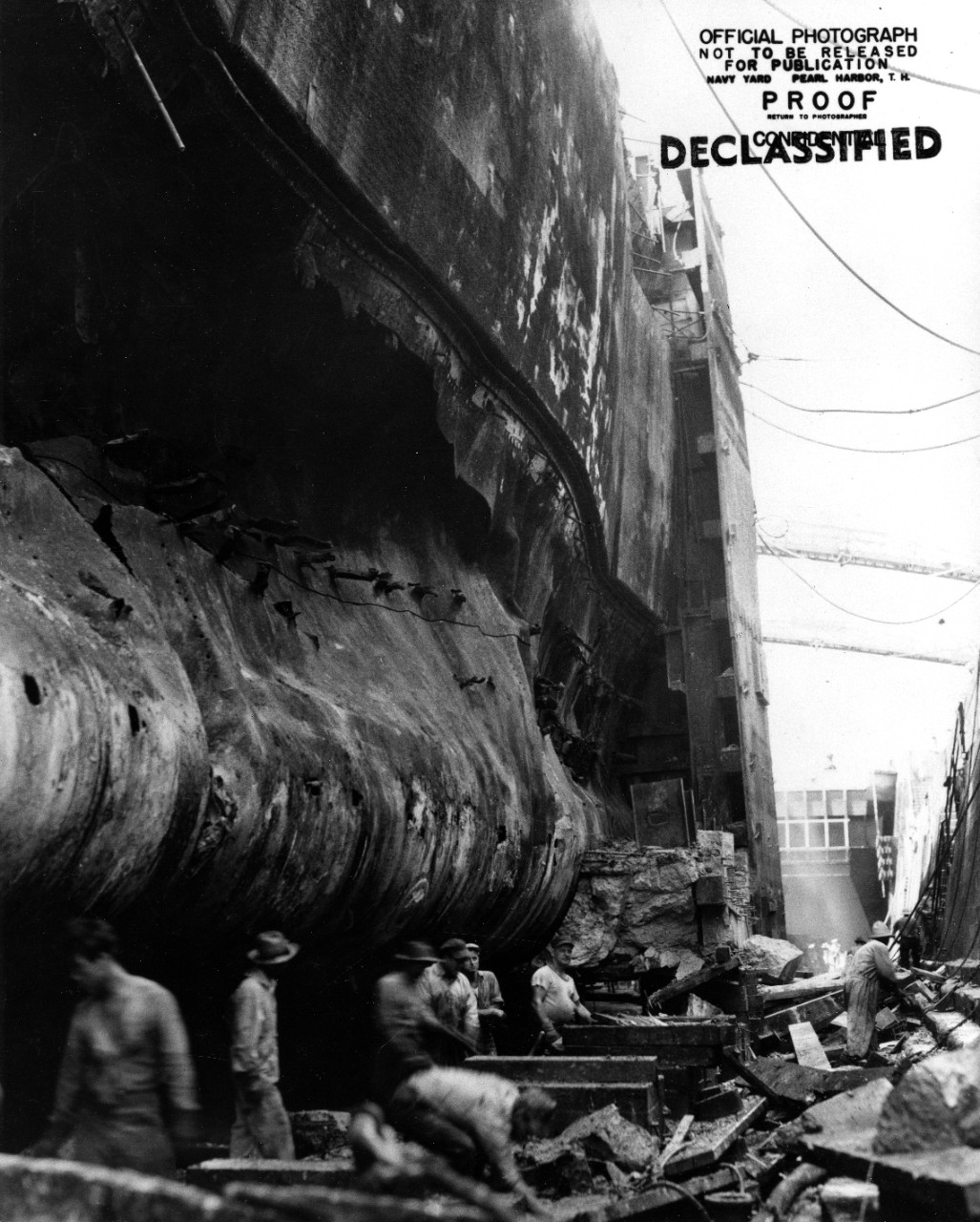
A view of the torpedo damage to West Virginia, with patch still in place in back of view
Oklahoma was the least valuable battleship at Pearl Harbor, due to her age and poor engines, and the decision was made to refloat and right her to clear the harbor, with no intention of returning her to service.2 The righting was done via building derricks on the hull and pulling on them with winches on Ford Island, a method called parbuckling,3 running March-June 1943. The hull was patched and refloated, then drydocked to strip her of anything valuable and make her seaworthy for the tow to the West Coast for scrapping. That tow, in May 1947, ended 500 miles from Hawaii when Oklahoma sank in a storm.
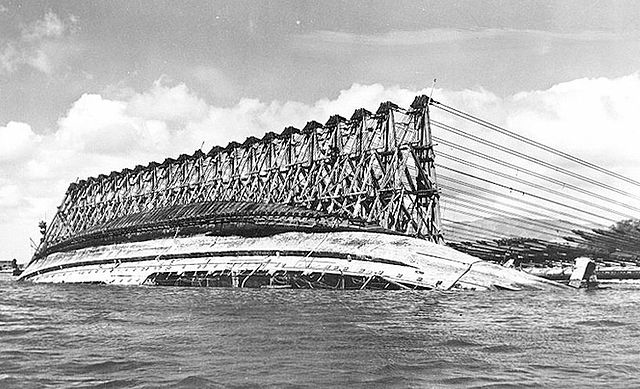
Parbuckling operations on Oklahoma
Arizona was obviously a total loss, and the only question was if it was worth trying to raise her for scrap. As it was, she was stripped by divers, the most notable salvage being Turrets 3 and 4, which were installed as coastal defense batteries in Hawaii. One of them was test-fired for the first time on VJ day, while the other was never completed. Her superstructure was scrapped in 1942. The guns of Turret 2 were recovered and reconditioned, later being installed on Nevada in the fall of 1944. The remains of the ship are still at Pearl Harbor, forming the USS Arizona memorial next to where the USS Missouri is moored, and a trickle of oil still leaks from her tanks.

Arizona in 1941 and today
Utah was stripped of valuable equipment, and an attempt at righting was made in 1943, but cancelled before completion. Her berth wasn’t important, and it would have cost too much to remove her. She remains there today.
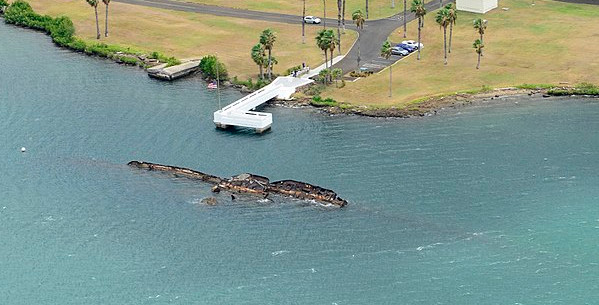
Utah today
After the Japanese threat had subsided a bit, the most common use of the older battleships was shore bombardment in support of amphibious landings. Nevada and Pennsylvania, joined by Idaho, first fired their guns in anger in the Aleutians, bombarding Japanese-held positions and supporting the landings on Attu, the only land battle of the war fought on US soil.
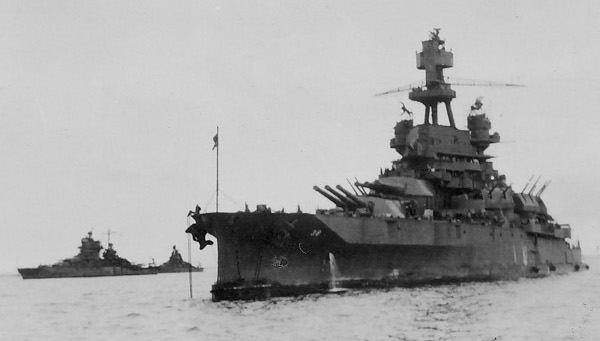
Idaho, Nevada and Pennsylvania in the Aleutians
Nevada was then transferred to the Atlantic, where she supported the D-Day landings, and the follow-on landings in Southern France in August of 1944. She returned to the Pacific as the fighting moved inland in Europe. In the meantime, the other ships had provided similar support at Makin, Tarawa, Kwajalein, Eniwetok, and the invasions of Saipan, Tinian, and Guam as the US marched closer to Tokyo. Then it was time to return to the Philippines, as MacArthur had promised in 1942. There, the resurrected battleships would finally get their revenge on the Japanese fleet, a story I'll tell next time.
1 They were joined in TF 1 by Colorado, New Mexico, Mississippi, and Idaho. Colorado had been in Puget Sound for an overhaul during the attack, while the other three ships had been in the Atlantic. ⇑
2 32 crew trapped deep in the hull were saved a few days after the attack, by cutting in through the bottom. ⇑
3 Parbuckling was also used to right the cruise ship Costa Concordia after she capsized in 2012. ⇑

Recent Comments